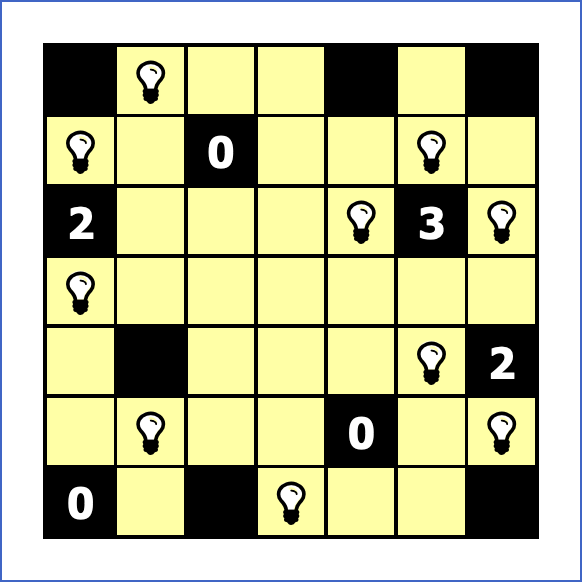Lab Assignment #1
Thermometers puzzle
Introduction
The following images show an example of initial
configuration of a puzzle (4 x 4) and the final
solution.
 |
 |
| Initial
configuration |
Solved puzzle |
What to do
- U D R L = is a thermometer bulb whose output is oriented up, down, right or left, respectively
- ^ v = are
vertical portions of a thermometer respectively
pointing up or down
- > < = are horizonatl portions of a thermometer respectively pointing right or left
The last two lines contain the numbers associated to
columns (first line) and rows (second line) separated by
blank spaces.
The following shows the input format for the initial
configuration above:
| ^R>> UR>D DDDv vvvv 3 2 1 1 1 3 2 1 |
The file examplesthermo.zip contains several input files and their solutions.
Step 2. Write a python program encode.py to transform each input ASCII file into a logic program containing facts. For instance:
| python3 encode.py dom01.txt
domain.lp |
will transform the example above into the set of facts for the predicates you decide to use for representing the problem. The file domain.lp can only contain facts and constant definitions, but no conditional rules or constraints.
Step 3. Encode the tents problem in clingo in a file called thermo.lp. You can use
| clingo 0 thermo.lp domain.lp |
to obtain all the answer sets. You should check that each puzzle should have a unique solution. You can use the following file decode.py that allows printing the solution as an output text file:
| python3 decode.py thermo.lp
domain.lp |
To use this program, you need output facts like fill(X,Y) to represent that the cell at X, Y is filled with mercury. You also need a predicate dim(N) to specify the size of the grid -- in the example above, dim(4). The result produced by this program will have the form
| .x.. xx.x x.x. x... |
Where 'x' represents a filled cell.
Finally, if you have installed the python library pygame, you can also draw a graphical representation using the files drawthermo.py and pics.zip (to be added) as follows. First, unzip de pictures file, and then call the program using a domain file domXX.txt and the output from decode.py (or a solXX.txt file instead):
| unzip pics.zip python3 drawthermo.py dom01.txt output.txt |
Assessment & delivery
The maximum grade for this exercise is 15
points = 15% of the course. The deadline for
delivery is Monday, November
3rd, 2025 using the MOODLE assignment in
each University. Exercises can be made by groups of 2
students at most. If so, only one student is required to
deliver the files in moodle, but all source files must
contain the names of the two group members.
Delivery: upload all files in a .zip including a
README.txt with the student names and any additional
comment you consider relevant.